The Lord of The Rings: The Motion Picture Trilogy – 4K UHD Blu-ray Review
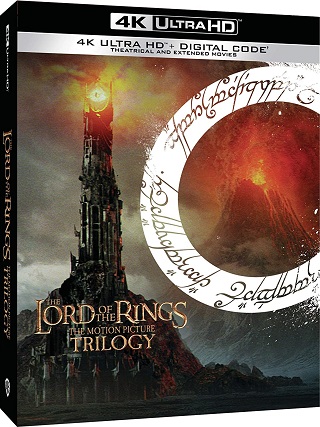 Commissions Earned
Commissions Earned
Release Title: The Lord of the Rings: The Motion Picture Trilogy
Release Date: 2020
Ratings: PG-13
Runtimes: 178min, 179min, 201min – 228min, 235min, 263min (extended)
Region Coding: Region Free
Studio: Warner
Audio Format: Dolby Atmos
High Dynamic Range: HDR10, Dolby Vision
Aspect Ratio: 2.39:1
Version Reviewed: 4K UHD Blu-ray
Release Date: 12/1/20
Director: Peter Jackson
Cast: Elijah Wood, Sean Astin, Ian Holm, Ian McKellen, Orlando Bloom, Billy Boyd, Dominic Monaghan, Sean Bean, John Rhys-Davies, Viggo Mortensen, Liv Tyler, Hugo Weaving, Christopher Lee, Cate Blanchett, David Wenham, Karl Urban, Bernard Hill, John Noble, Brad Dourif, Harry Sinclair, Andy Serkis, Lawrence Makoare
Jump to Sections:
Movies | Video | Audio | Bonus | Closing | Screenshots
Full 4K Tech Specs found at the bottom
 click to view a 4K Screenshot
click to view a 4K Screenshot
The Movies
“The Lord of the Rings” was a motion picture trilogy, based on the novel of the same title written by J.R.R. Tolkien. The films included “The Lord of the Rings: The Fellowship of the Ring” (2001), “The Lord of the Rings: The Two Towers” (2002), and “The Lord of the Rings: The Return of the King” (2003). All three of these films were directed, produced, and co-written by Peter Jackson. Peter Jackson, at this point in his career, was best known for his work directing, writing, and producing such films as Bad Taste (1987), Dead Alive (1992), Heavenly Creatures (1994), and The Frighteners (1996). Jackson would go on to become known for also directing the films King Kong (2005), The Lovely Bones (2009), The Hobbit: An Unexpected Journey (2012), The Hobbit: The Desolation of Smaug (2013), and The Hobbit: Battle of the Five Armies (2015).
The original stories, based on the Tolkien novel, to The Lord of the Rings films, were adapted to screenplays by Peter Jackson, along with the help of co-writers Fran Walsh and Philippa Boyens. It’s also worth noting that screenwriter Stephen Sinclair co-wrote the second film (The Two Towers). Fran Walsh, Peter Jackson’s wife, has worked with him on almost all of his films. Walsh is also known for her work as a screenwriter, usually on projects with her husband. Philippa Boyens is known for her work in both screenwriting and producing, namely on some of Jackson’s later films. Lastly, Stephen Sinclair is a longtime collaborator with Jackson dating back to the late eighties when he co-wrote a little controversial film with Jackson known as Meet The Feebles (1989).
The first film “The Fellowship of the Ring” after the opening introduction, starts us out in “The Shire” where we get to learn about and get to know some Hobbits like “Bilbo Baggins” (Ian Holm), his nephew “Frodo” (Elijah Wood), as well as Frodo’s friends “Sam” (Sean Astin), “Pippin” (Billy Boyd), and “Merry” (Dominic Monaghan). You’ll also get to meet Bilbo’s old friend, a wizard named “Gandalf” (Ian McKellen). Frodo, Gandalf, and his Hobbit friends will set off on a journey to destroy a powerful ring and along the way find some help via the white tower captain “Boromir” (Sean Bean), a ranger of the North “Aragorn” (Viggo Mortensen), a Sindarin elf “Legolas” (Orlando Bloom), and a dwarf warrior “Gimli” (John Rhys-Davies). Gandalf is a good wizard and his polar opposite is an evil wizard named “Saruman” (Christopher Lee). Saruman and Gandalf will clash throughout these films. You’ll also get to know some other characters in this film that will appear in the other two films in this trilogy. Do keep in mind, that I’m in no way trying to tell you the story of these films but only cover the characters and cast.
The second film “The Two Towers” picks up where the last film left off, with Frodo and Sam headed to Mordor and being accompanied by the evil “Gollum” (Andy Serkis). There’s a King “Theoden” (Bernard Hill), his evil assistant “Wormtongue” (Brad Dourif), and the King’s niece “Eowyn” (Miranda Otto) who becomes part of the story in this film. There are some royal elves you have seen in the first film and will start to see more in this film and the third. Specifically, these two royal elves include “Galadriel” (Cate Blanchett) and “Celeborn” (Marton Csokas). There also are some half-human half-elves like “Elrond” (Hugo Weaving) and his daughter “Arwen” (Liv Tyler). They too will play a part in this whole epic story.
The third film “The Return of the King” will bring things to an epic conclusion. Here you’ll see some characters from the previous film like “Eomer” (Karl Urban) and “Faramir” (David Wenham) start to be a larger part of things. And, last but not least there’s the “Witch King” (Lawrence Makoare). Look, folks, I’m not Tolkien and I’m not going to try to explain these films or spoil them. Just know they’re excellent. Finally, here’s are trailers for the films in 2160p 4K with HDR on YouTube to get you ready for the next bit, video quality.
”The Fellowship of the Ring” 4K Trailer:
”The Two Towers” 4K Trailer:
”The Return of the King” 4K Trailer:
Movie Ratings: 5/5/5 (out of 5)
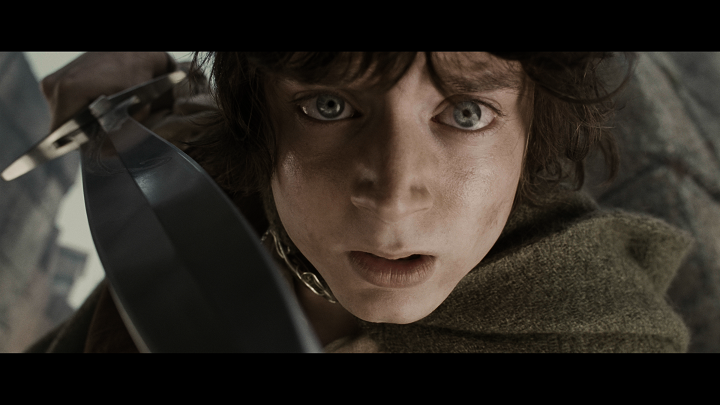 click to view a 4K Screenshot
click to view a 4K Screenshot
Video Quality
All three of the films in “The Lord of the Rings” trilogy make their debut on 4K UHD Blu-ray in the 2.39:1 aspect ratio. That goes for both the theatrical and the extended editions of each of the three films. Each film and version of each film includes Dolby Vision and HDR10 forms of High Dynamic Range.
These three films were all shot on 35mm film using the Super 35 cinematographic process, with such a large variety of cameras including some from Arricam, Arriflex, Mitchell Cameras, and Moviecam Compact. All three of the movies, in both their theatrical and extended versions, have each received new 4K remasters. This 4K remastering process was supervised by the director himself, Peter Jackson.
Let me get really, really, really technical, for a bit longer than usual here as I’ll be spanning across 9 discs, in regards to the 4K UHD Blu-ray Discs themselves here for this set. The first film, “The Lord of the Rings: The Fellowship of the Ring” in its theatrical cut is using a BD-100 (100 gigabytes) disc, 85.41 gigabytes total and 84.0 gigabytes for that theatrical cut itself. The second film, “The Lord of the Rings: The Two Towers” in its theatrical cut is using a BD-100 (100 gigabytes) disc, 87.35 gigabytes total and 86.0 gigabytes for that theatrical cut itself. The third film, “The Lord of the Rings: The Return of the King” in its theatrical cut is using a BD-100 (100 gigabytes) disc, 89.46 gigabytes total and 88.1 gigabytes for that theatrical cut itself.
Continuing on with the technical bit, and keeping it a bit separate for the extended editions of those to not become overwhelming, since they all use 2 discs for each film. The first film, “The Lord of the Rings: The Fellowship of the Ring” in its extended edition on Disc 1 uses a BD-100 (100 gigabytes) disc, 75.72 gigabytes total, and 67.4 gigabytes for the first half of the extended edition itself of the first film. The extended edition of Disc 2 uses a BD-100 (100 gigabytes) disc, 83.21 gigabytes total, and 74.9 gigabytes for the second half of the extended edition of the first film.
The second film, “The Lord of the Rings: The Two Towers” in its extended edition on Disc 1 uses a BD-100 (100 gigabytes) disc, 67.77 gigabytes total, and 65.9 gigabytes for the first half of the extended edition itself of the second film. The extended edition of Disc 2 uses a BD-100 (100 gigabytes) disc, 80.61 gigabytes total, and 71.5 gigabytes for the second half of the extended edition of the second film.
The third film, “The Lord of the Rings: The Return of the King” in its extended edition on Disc 1 uses a BD-100 (100 gigabytes) disc, 86.49 gigabytes total and 78.2 gigabytes for the first half of the extended edition itself of the third film. The extended edition of Disc 2 uses a BD-100 (100 gigabytes) disc, 91.65 gigabytes total, and 83.4 gigabytes for the second half of the extended edition of the third film.
Now, with all of that disc use information out of the way, let me start to examine the video quality here on these films. A few have complained that the “Extended” version of each film is split across two discs here on 4K UHD Blu-ray. Well, first off look above at the disc usage for those versions versus the theatrical cuts. There’s a whole lot more bandwidth to work with it being split like this and using so much of the capacity of each BD-100 disc. The extended version runs higher bitrates. On the first film, in its extended version, it hits 100Mbps or higher at least four or five times in the opening 8 minutes. That’s what I’d call impressive! Some films on 4K never manage to hit that high of a bitrate even once, let alone that many times in just that short of a runtime.
Both versions have a completely solid black level here. In the first film, during a fade-out of a scene, I noticed that it was finally able to achieve a full blackout on my 4K display, almost like it was off for just a short bit of time. Never had the films been able to achieve that solid of a black level to do that complete blackout on the Blu-ray format because of the lack of HDR. The colors are represented in a very lifelike manner across all of the films and their two versions. The foliage of The Shire in the first film and its bright greens look beautiful and then later in some scenes inside a dark environment, the shading is so much more lifelike than ever before on Blu-ray. Flesh tones here are represented more realistically as well many thanks to the addition of HDR. There’s just so much more to see now in brighter scenes with bright vibrant colors and then in darker scenes with more realistic shading and deeper darks. This is the case across all three films, and the color is truly a sight to behold.
Speaking of color, the previous green tint found on Blu-ray versions of these films is not at all an issue this time around. I was immediately asked about this by some readers. I can safely say that no green tint is at all present here, with things looking perfectly balanced in terms of color and the tones now seem natural. As briefly mentioned, the color timing here feels to have been heavily corrected on a level, in comparison to the original Blu-ray releases, that adds so much more to the presentation. Still, it’s not a 100% perfect visual presentation in 4K. Sure, each is an impressive improvement over the HD versions of these films but they come with some issues that I’ll discuss a bit below. The average consumer is likely to not even really care about these problems, in all due honesty but it’s something a home theater enthusiast will most certainly notice.
As I had mentioned, readers initially asked me about the previous green tint and if DNR (digital noise reduction) was used. I have to admit that DNR appears to have been used on all three films and their extended versions as well. Keep in mind that these came from Super 35mm source material. Super 35, especially newer, can come with a minimal amount of visible film grain when it’s done correctly. Now, take also into consideration that these films all received new 4K scans and were then remastered, which Peter Jackson oversaw and in turn, you’d only have to believe he approves of this.
UPDATE: So, it turns out Warner has posted a video on YouTube behind the scenes with director Peter Jackson overseeing the remastering process in 4K of all three of these “The Lord of the Rings” trilogy of films as well as “The Hobbit” trilogy. In this video, he admits many things that back up what I’ve felt all along. So, Peter Jackson in this video says at a few points during the video these exact (or near-to-exact) statements:
- “The thing with 4K is not to just go for pristine sharpness, it is to preserve the cinematic look at the same time of everything becoming a little bit more crisp.”
- “One of the things we found, which we weren’t really expecting, once we converted The Lord of the Rings films to 4K and HDR is the imperfections of the visual effects started to show.”
- “You know, visual effects technology has advanced a lot in twenty years and when they become, you know, ultra crisp and sharp through the 4K process we realized that some of the shots were not holding up too well.”
- “So, we got the opportunity to go back and, you know, remove and paint out any imperfections.”
You can find the video I’m referring to that this quote is taken from below. I suggest you take a pause from my review and watch it first.
“Middle-Earth: Behind the Scenes with Peter Jackson”
So, DNR has been applied to the new 4K DI (digital intermediate) masters for each film, and it would seem was intended by the director himself. However, I don’t see that to be a dealbreaker of an issue. This still manages to hold a light amount of film grain, as I’ve seen with some other Super 35 source material when it comes to 4K.
Perhaps there also may have been a light use of some edge enhancement (EE) to sharpen things up here. Things can feel a tad bit different in terms of clarity in some scenes more than others, feeling sharper than others that feel softer. The CG visual effects, the makeup, costumes, miniatures, in-camera effects and all look impressive here and rarely show off many flaws. Still, one should keep in mind that these films were made almost 20 years ago and that CG effects and blue screen techniques have greatly improved since then in newer films. That said, they manage to hold up visually in 4K and at times can feel impressive. However, this trilogy feels like it could have looked just slightly better somehow if they perhaps hadn’t applied so much DNR and left the original film grain and detail as sharp as it should have been. I just believe it could have looked a great deal better, but it’s almost enough to somewhat do these incredible motion pictures the visual justice they deserve. I still think that the average consumer will be pretty much happy with the 4K presentation, as I had mentioned, but some will find things that weren’t done correctly and prevent them from looking perfect.
All and all, this trilogy earns itself an impressive 4.5 rating for video quality. Each of these films on 4K UHD Blu-ray Discs here offers a nice improvement over the original Blu-ray releases of the films.
Video Quality Rating: 4.5 (out of 5)
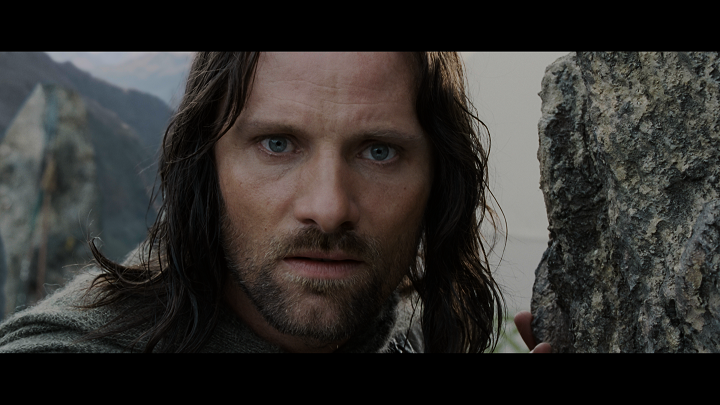 click to view a 4K Screenshot
click to view a 4K Screenshot
Audio Quality
“The Lord of the Rings” trilogy of films, in all of their forms (both theatrical and extended editions), make their debut in the 4K UHD Blu-ray format in Dolby Atmos, with a Dolby True HD 7.1 core for those unable to decode that sound format.
This audio section will cover all three of the films and both versions of each. I’ll mention some specific things, but for the most part, this will be generalized to the trilogy itself.
The dialogue is primarily driven from the center channel but there are a lot of occasions where you’ll hear dialogue carry over into the other channels such as rears, to set the atmosphere of a room or psychologically give you a bit of a treat. The dialogue never manages once to have any issues or be drowned out by any of the extremely intense action or music. These are perfect Dolby Atmos mixes by all means. The height channels make excellent use of sound effects and music and will leave your room filled, making you feel fully immersed in the listening experience. The mixes themselves are just so amazingly well-balanced between the front (left & right) channels, and the rear channels (2 or 4 depending on your setup), along with the extremely effective addition of the height channels (2 or 4 depending on setup).
The sound effects, throughout all three films, now come across as so lifelike with the noise of swords, arrows, horses galloping, hand-to-hand combat, and all so much more realistic than that ever heard in just a 5.1 ES or 6.1 lossless mixes. Let’s face it, looking back, not many had 6.1 speaker configurations back then, in 2012 & 2014, and fewer AV receivers are being made these days with anything but 7.1 and 5.1 configurations, and new formats like Dolby Atmos or DTS:X have become expected on most major films.
In the first film especially I felt that the original music sounded so much ethereal at times, which is very impressive and a dramatic change-up in mixes that can be extremely intense for the most part. The music itself helps to drive some of the intensity with its original score which can be throughout this trilogy very passionate and powerful. The music, and even the action itself, can become quieter for short bits which just works so well. Even during the quieter scenes, you’ll still be hearing it makes excellent use of the height channels. In scenes where there’s a large area, you’ll hear the voices and sounds coming from the height channels ever so fairly in a very realistic atmosphere echo.
In the second film the sound of the wind, early on, can be heard practically coming from the entire speaker configuration, and most especially via the height and rear channel speakers. The sound of horses galloping in large groups is something that will fill your room with a loud thunderous bit each time a scene comes up involving such. There’s a lot of oomph behind the sounds of horses galloping and even their neigh reactions. Things can truly get intense during the large battle scenes, especially when swords start swinging and orcs or humans in armies are present. The sounds in the forest, especially that of a tree (fairly early in) are downright monstrous in terms of bass and the amount of height and rear channel usage. The music here, now presented in Atmos, can go from softer to a level of intensity that’ll leave you blown away. Low-end bass drops for sound effects also are something you’ll feel a whole lot of in the second film and it is downright incredible. The audio presentations found here on all these films in the trilogy, and their two versions for each, are nothing short of amazing.
One thing that I can assure you of here is that you will feel like you’re being completely encompassed by the sound mixes for the three films themselves on a level that has never been possible. It’s something out of this world. I love the pans from right to left or left to right you’ll hear across the front and/or rear channels during some action scenes. I also love the pans from front to rear you’ll hear such as during the first film when a fireworks display involving a dragon feels to be coming right at you and those in said scene. It’s effective stuff like that and then the height channels add this unique sound of it towering above that one cannot help but truly admire about this trilogy of films in the Dolby Atmos sound format. The amount of bass here, especially low-end bass, you’ll feel via the subwoofer is downright tremendous. To say these mixes can get intense would become an understatement as I’m learning when writing this.
This trilogy of films now on 4K UHD Blu-ray will leave you completely overwhelmed and extremely satisfied now in Dolby Atmos. I don’t care how amazing you thought the sound was before on Blu-ray or even during the theatrical showings, this is superior and just unlike anything you have experienced in this film. Fans are going to absolutely love this and likely receive complaints from landlords, neighbors, family members, police, and whatnot for it being louder than all hell. Sorry, but that’s what makes a “demo disc” that delivers absolute reference material from the very start until the very end credits, for every film and each version.
This is Dolby Atmos at its absolute finest and one of the most impressive sets of mixes in the sound format that I have heard to date. This (trilogy entirely) would be in my personal favorite top 5 releases on the format with Dolby Atmos sound. It’s that downright incredible. This is something you’ll just have to hear to believe but trust me, you will not be let down by the sound presentations. This film in both its theatrical and extended versions earns a perfect and definitively earns itself perfect reference material 5 rating for audio quality. Wow. Just, wow. These films sound simply more astonishing than they ever did before and this [on 4K UHD Blu-ray] is the ultimate way to experience it.
Audio Quality Rating: 5 (out of 5)
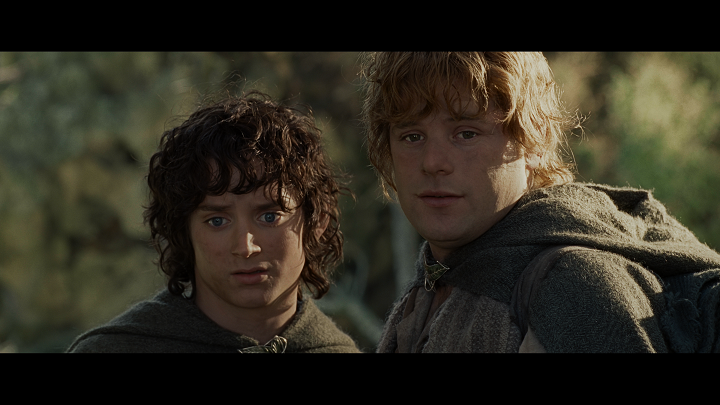 click to view a 4K Screenshot
click to view a 4K Screenshot
Bonus Materials
Bonus materials physically on this release include:
- A Digital Copy of each film of the three films in both the theatrical and extended versions is included, via a physical paper insert with a redemption code, which is compatible with Movies Anywhere. That’s going to work across a lot of services like AppleTV (iTunes), Google Play, Vudu, and Fandango Now. You’ll get the film in 4K on all of those services, to my knowledge. I opted for the AppleTV (iTunes) versions.

The bonus materials here are here. Yes, you read that correctly. Well, that digital copy of each film and also each version of each film pays off here, as you’ll get all of the “iTunes Extras” bonus material for each “Extended Edition” of each film. These are pretty close to what all you got on the Blu-ray releases. I’ll be covering those here below, but first I want to clarify something. First, and foremost, yes I am rewarding this 4K UHD Blu-ray release for bonus materials when they’re only available digitally and on one platform. Why? Because this uses Movies Anywhere which links with lots of services (as mentioned above). Well, even if you don’t use Apple’s AppleTV (iTunes) service you technically already have the extras from the moment you redeem this set. You have a lot of options for how to watch these iTunes Extras. You can use your Apple TV (or Apple TV 4K rather) to watch this on your TV. You cannot, however, cannot, I repeat, not watch iTunes Extras (currently) in the AppleTV app on devices such as Roku or some TV sets. However, you can use the original iTunes application on a PC or Mac and you will be able to play (or rather have access to) the iTunes extras. So, this should be apparent but you also can watch these iTunes Extras on Apple devices such as iPhones, iPads, and even the iPod Touch. Below is a set of screenshots of these iTunes Extras being accessed at the menu of the iTunes app on a PC for the first film in its “Special Extended Edition.”
Now, I’ll very briefly cover those digital iTunes Extras.
“The Lord of the Rings: The Fellowship of the Ring” Extended Edition iTunes Extras :
- Audio Commentary with “The Director and Writers” features Peter Jackson (director, writer, producer), Fran Walsh (writer, producer), and Philippa Boyens (writer).
- Audio Commentary with “The Design Team” features Grant Major (production designer), Ngila Dickson (costume designer), Richard Taylor (Weta Workshop creative supervisor), Alan Lee (conceptual designer), John Howe (conceptual designer), Dan Hennah (supervising art director, set decorate), Chris Hennah (art department manager), and Tania Rodger (Weta Workshop manager).
- Audio Commentary with “The Production/Post-Production Team” features Barrie M. Osborne (producer), Mark Ordesky (executive producer), Andrew Lesnie (director of photography), John Gilbert (editor), Rick Porras (co-producer), Howard Shore (composer), Jim Rygiel (visual effects supervisor), Ethan Van der Ryn (supervising sound editor/co-designer), Mike Hopkins (supervising sound editor), Randy Cook (Weta animation designer & supervisor), Christian Rivers (Weta VFX art director), Brian Van’t Hul (Weta VFX cinematographer), and Alex Funke (miniature unit director of photography).
- Audio Commentary with “The Cast” features Elijah Wood (“Frodo”), Ian McKellen (“Gandalf”), Liv Tyler (“Arwen”), Sean Astin (“Sam”), John Rhys-Davis (“Gimli”), Billy Boyd (“Pippin”), Dominic Monaghan (“Merry”), Orlando Bloom (“Legolas”), Christopher Lee (“Saruman”), and Sean Bean (“Boromir”).
- “The Appendices Part 1 – From Book to Vision” includes:
- “J.R.R. Tolkien: Creator of Middle-Earth“ (22:29 – SD)
- “From Book to Script” (20:05 – SD)
- “Visualizing the Story” includes:
- “Storyboards and Pre-Viz: Making Words Into Images” (13:31 – SD)
- “Early Storyboards” (10:58 – SD)
- “Pre-Viz Animatics” (3:30 – SD)
- “Animatic to Film Comparison: Nazgul Attack at Bree” (5:23 – SD)
- “Animatic to Film Comparison: The Bridge of Khazad-Dum” (7:43 – SD)
- “Bag End Set Test” (6:35 – SD)
- “Designing and Building Middle-Earth“ (1:35:54 – SD)
- “The Appendices Part 2 – From Vision to Reality” includes:
- “Filming The Fellowship of the Ring“ (1:37:31 – SD)
- “Visual Effects: Scale” (15:35 – SD)
- “Visual Effects: WETA Digital” (24:53 – SD)
- “Editorial: Assembling an Epic” (12:47 – SD)
- “Digital Grading” (12:09 – SD)
- “Sound and Music: The Soundscapes of Middle-Earth“ (12:37 – SD)
- “Sound and Music: Music for Middle-Earth“ (12:29 – SD)
- “The Road Goes Ever On…” (7:23 – SD)
- “The Fellowship of the Ring: Behind the Scenes” (1:12:54 – SD) is shot like a home movie but it also includes interviews with the entire cast and crew that worked on the film.
“The Lord of the Rings: The Two Towers” Extended Edition iTunes Extras :
- Audio Commentary with “The Director and Writers” features Peter Jackson (director, writer, producer), Fran Walsh (writer, producer), and Philippa Boyens (writer).
- Audio Commentary with “The Design Team” features Richard Taylor (Weta Workshop creative supervisor), Tania Roger (Weta Workshop manager), Grant Major (production designer), Alan Lee (conceptual designer, set decorator), John Howe (conceptual designer), Dan Hennah (supervising art director, set decorator), and Chris Hennah (art department manager).
- Audio Commentary with “The Production/Post-Production Team” features Barrie M. Osborne (producer), Mark Ordesky (executive producer), Andrew Lesnie (director of photography), Mike Horton (editor), Jabez Olssen (additional editor), Rick Porras (co-producer), Howard Shore (composer), Jim Rygiel (visual effects supervisor), Joe Letteri (visual effects supervisor), Ethan Van der Ryn (supervising sound editor/co-designer), Mike Hopkins (supervising sound editor), Randy Cook (Weta animation designer & supervisor), Christian Rivers (Weta VFX art director), Brian Van’t Hul (Weta VFX cinematographer), and Alex Funke (miniature unit director of photography).
- Audio Commentary with “The Cast” features Elijah Wood (“Frodo”), Sean Astin (“Sam”), John Rhys-Davis (“Gimli”, the voice of “Treebeard”), Billy Boyd (“Pippin”), Dominic Monaghan (“Merry”), Orlando Bloom (“Legolas”), Christopher Lee (“Saruman”), Sean Bean (“Boromir”), Bernard Hill (“Theoden”), Miranda Otto (“Eowyn”), David Wenham (“Faramir”), Brad Dourif (“Wormtongue”), Karl Urban (“Eomer”), John Noble (“Denethor”), Craig Parker (“Haldir”), and Andy Serkis (“Gollum”).
- “The Appendices Part 3: The Journey Continues…” includes:
- “J.R.R. Tolkien: Origins of Middle-Earth” (29:31 – SD)
- “From Book to Script: Finding the Story” (20:59 – SD)
- “Designing and Building Middle-Earth“ (1:29:36 – SD)
- “Gollum“ (44:44 – SD)
- “The Appendices Part 4: The Battle for Middle-Earth Begins” includes:
- “Filming The Two Towers: Warriors of the Third Age” (20:59 – SD)
- “Filming The Two Towers: Cameras in Middle-Earth“ (1:08:13 – SD)
- “Visual Effects: Miniatures – Big-atures” (21:52 – SD)
- “Visual Effects: Miniatures – The Flooding of Isengard Animatic” (4:02 – SD)
- “Visual Effects: WETA Digital” (27:33 – SD)
- “Editorial: Refining the Story” (21:59 – SD)
- “Music and Sound” (46:49 – SD)
- “The Battle for Helm’s Deep Is Over…” (9:29 – SD)
- “The Two Towers: Behind the Scenes” (1:46:17 – SD) is shot like a home movie but it also includes interviews with the entire cast and crew that worked on the film.
“The Lord of the Rings: The Return of the King” Extended Edition iTunes Extras :
- Audio Commentary with “The Director and Writers” features Peter Jackson (director, writer, producer), Fran Walsh (writer, producer), and Philippa Boyens (writer).
- Audio Commentary with “The Design Team” features Grant Major (production designer), Ngila Dickson (costume designer), Richard Taylor (Weta Workshop creative supervisor), Alan Lee (conceptual designer, set decorator), John Howe (conceptual designer), Dan Hennah (supervising art director, set decorator), and Chris Hennah (art department manager), and Tania Rodger (Weta Workshop manager).
- Audio Commentary with “The Production/Post-Production Team” features Barrie M. Osborne (producer), Mark Ordesky (executive producer), Jamie Selkirk (co-producer & editor), Annie Collins (additional editor), Rick Porras (co-producer), Howard Shore (composer), Jim Rygiel (visual effects supervisor), Ethan Van der Ryn (supervising sound editor/co-designer), Mike Hopkins (supervising sound editor), Christian Rivers (visual effects concept designer), Alex Funke (visual effects director of photography), Joe Letteri (Weta visual effects supervisor), Randy Cook (animation designer & supervisor), Brian Van’t Hul (Weta visual effects director of photography).
- Audio Commentary with “The Cast” features Elijah Wood (“Frodo”), Ian McKellen (“Gandalf”), Liv Tyler (“Arwen”), Sean Astin (“Sam”), John Rhys-Davis (“Gimli”, the voice of “Treebeard”), Bernard Hill (“Theoden”), Christopher Lee (“Saruman”), Billy Boyd (“Pippin”), Dominic Monaghan (“Merry”), Orlando Bloom (“Legolas”), Hugo Weaving (“Elrond”), Miranda Otto (“Eowyn”), David Wenham (“Faramir”), Karl Urban (“Eomer”), John Noble (“Denethor”), Andy Serkis (“Gollum” & “Smeagol”), and Lawrence Makoare (“Witch King” & “Gothmog”).
- “The Appendices Part 5: The War of the Ring” includes :
- “J.R.R. Tolkien: The Legacy of Middle-Earth“ (29:30 – SD)
- “From Book to Script” (30:25 – SD)
- “Designing and Building Middle-Earth“ (1:59:33 – SD)
- “Home of the Horse Lords” (30:17 – SD)
- “The Appendices Part 6: The Passing of an Age” includes:
- “Filming The Return of the King: Cameras in Middle-Earth“ (1:13:14 – SD)
- “Visual Effects: WETA Digital” (42:05 – SD)
- “Post-Production: Journey’s End” (1:28:01 – SD)
- “The Passing of an Age” (25:14 – SD)
- Cameron Duncan: The Inspiration for “Into the West” (15:59 – SD)
- “The Return of the King: Behind the Scenes” (1:51:54 – SD) is shot like a home movie but it also includes interviews with the entire cast and crew that worked on the film.
Overall, the bonus materials here are based on the digital copies of the three films, and each version of them has an “Extended Edition” on iTunes (AppleTV) with those iTunes Extras. So, that’s where all the extras listed above are available. You’ll get over 3 hours or so of extras, and that’s not including the four audio commentary tracks, for each film. Essentially, this is everything you got on those “Extended Edition” Blu-ray Disc sets of these films — just digitally and with no discs to need to swap. And no, I’m not fully saying digital extras make up for the real thing on a disc (physically). But, these extras work this way and give fans who might have previously only owned the theatrical cuts access to so much more material. Sure, there will be more material included on the 4K UHD Blu-ray “Middle-Earth” set coming next year, but this is a nice set of supplemental material digitally for now. And to think, some have said or will say that this includes no bonus materials. They, technically, are wrong.
Bonus Materials Rating: 4.25 (out of 5)
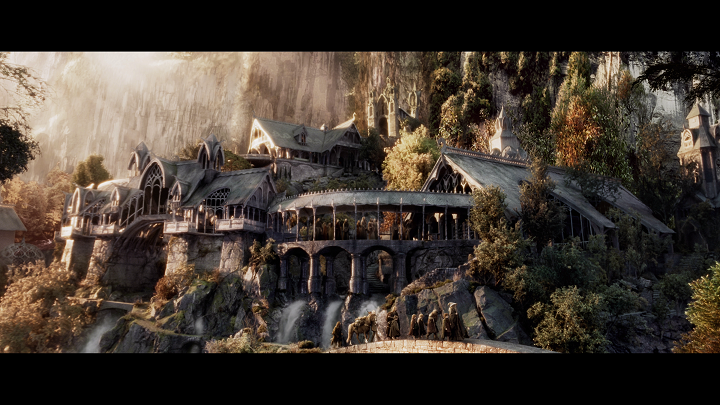 click to view a 4K Screenshot
click to view a 4K Screenshot
Closing Thoughts
These three films in “The Lord of the Rings” trilogy are highly regarded as modern cinema classics and were nominated and winners of numerous awards, which I’ll discuss below for each film. These films were some of the most ambitious efforts in the fantasy genre and are great forms of escapism. You’ll be in for a journey yourself here throughout the trilogy.
“The Lord of the Rings: The Fellowship of the Ring” was nominated for a total of thirteen Academy Awards (Oscars). It ended up winning a total of four Oscars in the categories of “Best Cinematography,” “Best Makeup,” “Best Music, Original Score,” and “Best Effects, Visual Effects.” Critics were very kind to the first film and it carries a “Certified Fresh” rating on Rotten Tomatoes.
“The Lord of the Rings: The Two Towers” was nominated for a total of six Academy Awards (Oscars). It would end up winning a total of two Oscars in the categories of “Best Sound Editing” and “Best Visual Effects.” The critics were even kinder to the second film and it also carries a “Certified Fresh” rating on Rotten Tomatoes.
“The Lord of the Rings: The Return of the King” was nominated for and won a total of eleven Academy Awards (Oscars). The third and final film in the trilogy won Oscars in every category that it was nominated, including “Best Picture,” “Best Director,” “Best Writing, Adapted Screenplay,” “Best Film Editing,” “Best Art Decoration – Set Decoration,” “Best Costume Design,” “Best Makeup,” “Best Music, Original Score,” “Best Music, Original Song,” “Best Sound Mixing,” and “Best Visual Effects.” To say this film swept the Oscars that year would be a bit of an understatement. Critics also were kind in their reviews of the third film and it carries a “Certified Fresh” rating on Rotten Tomatoes.
In terms of video quality, this 4K UHD Blu-ray debut of the films is impressive and is certainly the best that these films have ever looked at, especially in terms of color in comparison to the previous Blu-ray releases. There’s a nice amount of detail here now in 4K resolution with HDR (high dynamic range), especially in facial close-ups, that you were never able to see in the 1080p HD presentation. However, this visual presentation is not entirely perfect, as it does have a few minor problems. Namely, the use of DNR (digital noise reduction) seems to have smoothed things over a tad bit.
To be from a Super 35 film source and a new 4K remaster you’d think you would be able to see skin pores in facial close-ups but they’re almost softened. However, you oddly enough can make out tiny little hairs or even tears when a character weeps. These are things that honestly most consumers will not even notice or complain about, but then again, that’s my job to point these things out. Finally, regarding video quality, there also seems to be a tiny bit of EE (edge enhancement) that was used on this new 4K master. That all being said, it is still an impressive enough upgrade here in terms of the 4K visual presentation to be somewhat pleased even if you’re not a fan of DNR or EE filters being applied.
In terms of audio quality, “The Lord of the Rings: The Motion Picture Trilogy” comes with some of the most impressive Dolby Atmos object-based surround sound mixes that I have ever heard. Each one of these three films, in either their theatrical or extended version, proves to be pure “demo material” from start to finish. To say these mixes can get intense would be a bit of an understatement. Each film will leave you feeling so much more immersed in the motion picture experience now thanks to the benefits of height channel speakers. The 6.1 surround sound mixes found on the previous Blu-ray releases of these films were pretty impressive themselves but now with Dolby Atmos, these films can be presented to you in an audio presentation that feels nothing short of otherworldly. Each one of these mixes earns a perfect 5 rating for audio quality, with enough “oomph” to leave this reviewer extremely pleased.
In terms of bonus materials, physically this set doesn’t come with anything but a code that will redeem the three films (both theatrical and extended versions) in 4K on your choice of online video services. However, if you use the AppleTV (iTunes) service you’ll get “iTunes Extras” which are essentially everything that you previously saw on the “Extended Edition” Blu-ray Disc releases of the film trilogy. So, there are technically some bonus materials here. There are hours upon hours of them along with 4 audio commentary tracks for each “extended” version of each film. To access that you’ll have to link your Movies Anywhere account with your Apple ID. This is all free to do and doesn’t require you to be on an Apple device, as I’ve fully described much further above in the bonus section. I’m pleased with the fact that you get extras in a digital form, even if it is only on one service. This is enough to leave fans pleased, for now. Plus, there’s always the “Middle-Earth Ultimate Collector’s Edition” 4K UHD Blu-ray set coming Summer of next year, with some new extras promised, if this is not enough for you.
Is this one to rule them all? That depends on if you’re asking if it is 100% perfect or if it’s one very impressive experience. No, it’s not 100% perfect in terms of video quality, but it is one very unforgettable experience in 4K and most especially in Dolby Atmos. The sound mixes are truly perfect and the most impressive part of this 4K UHD Blu-ray release. That’s not to say that the video quality doesn’t come with some excellent color correction in comparison to the Blu-ray and all, but at the same time, it does come with the use of DNR (digital noise reduction). Still, these films have never looked better unless you have them on 35mm and a professional projector nearby.
All and all, “The Lord of the Rings: The Motion Picture Trilogy” on the 4K UHD Blu-ray format is a highly recommended upgrade for anyone who has previously owned the films on Blu-ray or DVD. If you’ve never owned these films, you’re in for a treat as this is the best they’ve ever looked and sounded.
In terms of 4K UHD Blu-ray release, this gets:
4.5 (out of 5) for video quality
5 (out of 5) for audio quality
4.25 (out of 5) for bonus materials
Overall Verdict:
A Highly Recommended Upgrade
Available As:
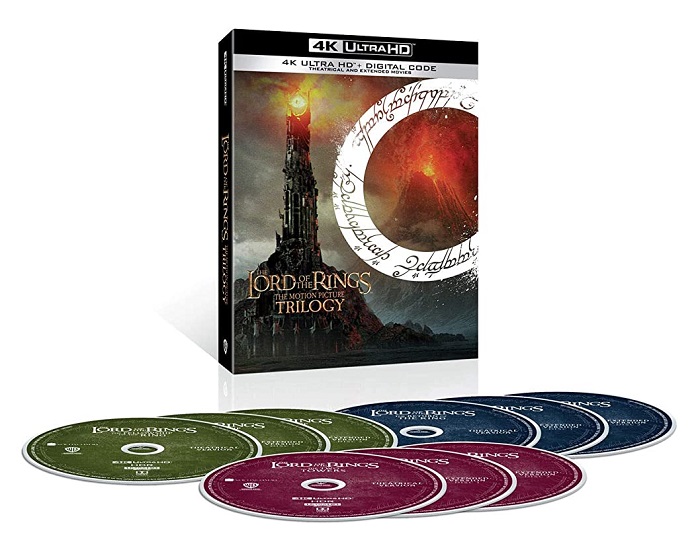 2020 The Motion Picture Trilogy 4K UHD Blu-ray Release
2020 The Motion Picture Trilogy 4K UHD Blu-ray Release
Commissions Earned
4K UHD Blu-ray Screenshots:
WARNING: Some shots may contain “spoilers” for those who have not seen these films before or the extended edition (version) of each film.
“The Lord of the Rings: The Fellowship of the Ring”:
“The Lord of the Rings: The Two Towers”:
“The Lord of the Rings: The Return of the King”:
SOURCES: All taken from the “Extended” versions.
Packaging:
4K UHD Blu-ray Technical Specifications:
Aspect Ratio: 2.39:1
Exact Runtime(s): 2:58:25, 2:59:25, 3:21:01 (theatrical) 1:45:43, 2:02:34, 1:46:39, 2:08:52, 2:07:40, 2:15:37 (extended)
Audio Format(s): English Dolby Atmos (with a Dolby TrueHD 7.1 core), Dolby Digital 5.1, DTS-HD Master Audio 5.1 surround, DTS 5.1, Dolby Digital 2.0 Stereo
Languages: English, French, German, Spanish, Italian, Czech
Subtitles: English, French, German, Italian, Dutch, Chinese, Korean, Spanish, Czech, Danish, Finnish, Greek, Norwegian, Polish, Swedish, Thai
HDR: HDR10, Dolby Vision
Disc Size: BD-100 (x9)
Disc Use: Disc 1 uses 85.41GB total / 84.0GB for “The Fellowship of the Ring” theatrical.
Disc 2 uses 87.35GB total / 86.0GB for “The Two Towers” theatrical.
Disc 3 uses 89.46GB total / 88.1GB for “The Return of the King” theatrical.
Disc 4 uses 75.72GB total / 67.4GB for “The Fellowship of the Ring” extended disc 1.
Disc 5 uses 83.21GB total / 74.9GB for “The Fellowship of the Ring” extended disc 2.
Disc 6 uses 67.77GB total / 65.9GB for “The Two Towers” extended disc 1.
Disc 7 uses 80.61GB total / 71.5GB for “The Two Towers” extended disc 2
Disc 8 uses 86.49GB total / 78.2GB for “The Return of the King” extended disc 1.
Disc 9 uses 91.65GB total / 83.4GB for “The Return of the King” extended disc 2.


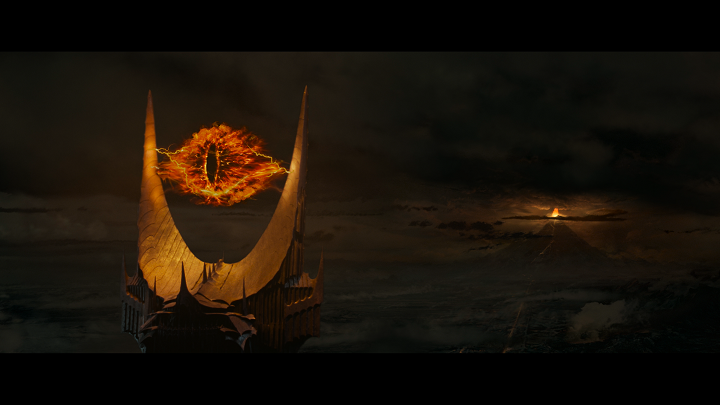



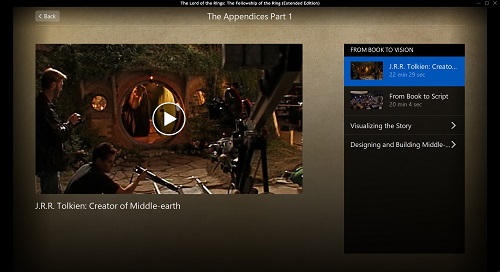
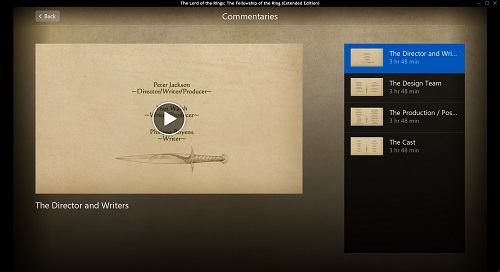


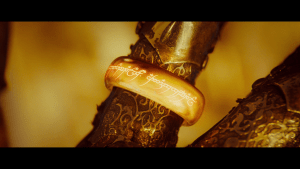

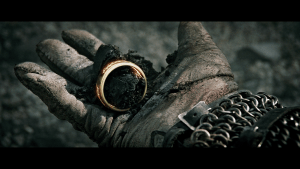
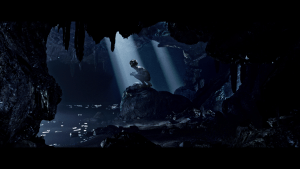


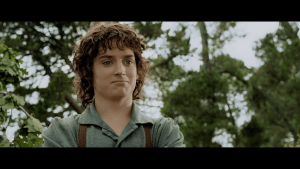
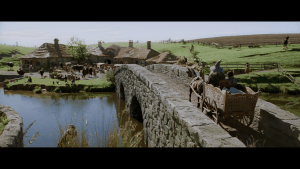
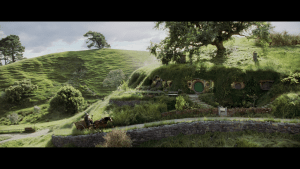
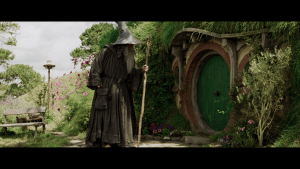
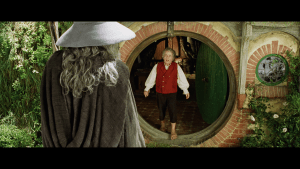
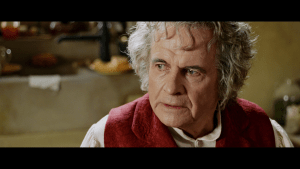
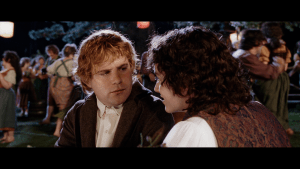
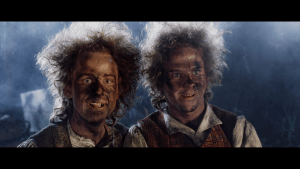
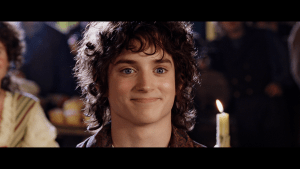


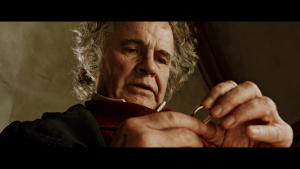
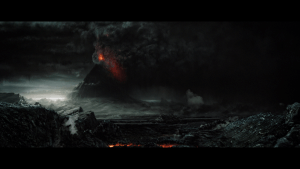
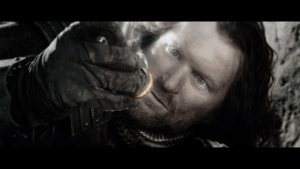
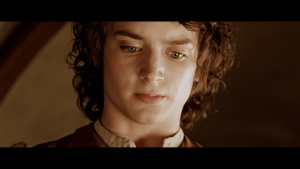
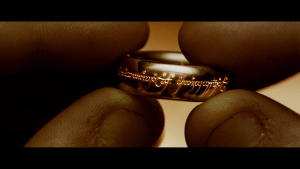

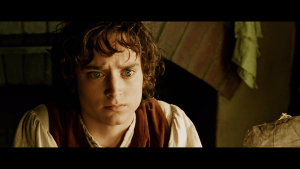
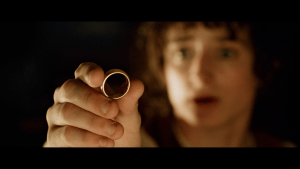
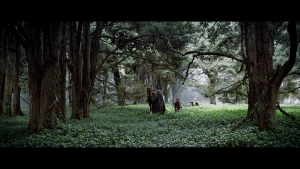

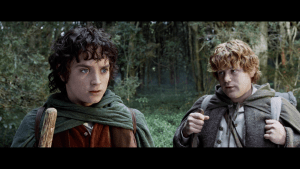
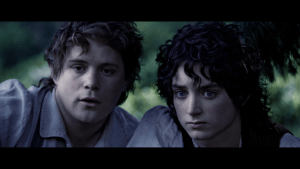
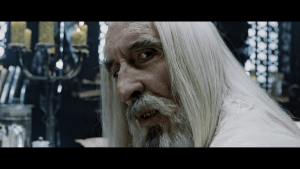
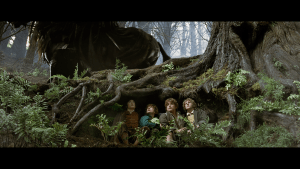
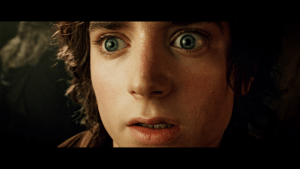
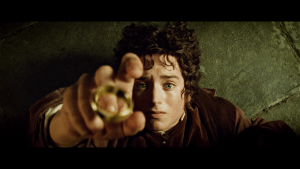
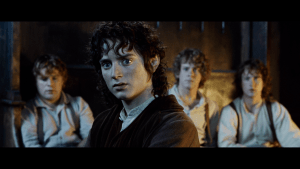
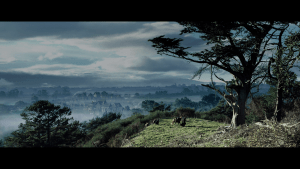
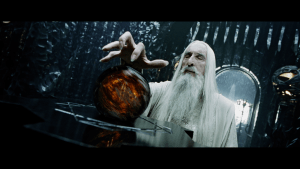
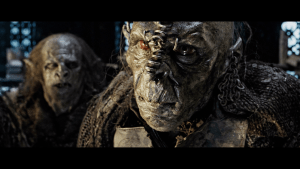

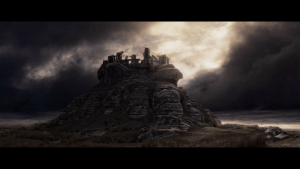
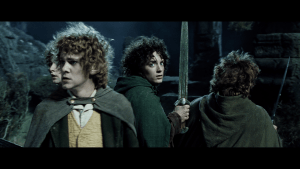

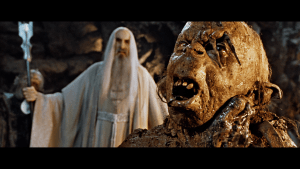
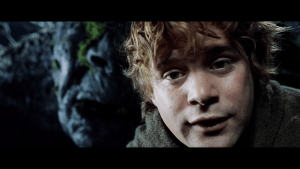
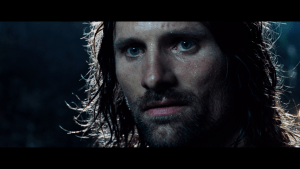

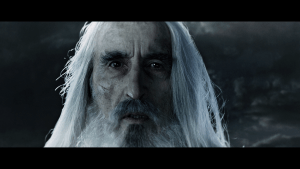

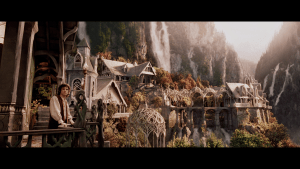
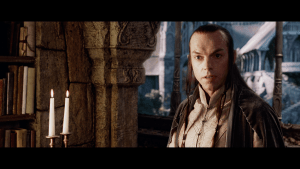
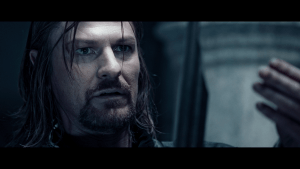
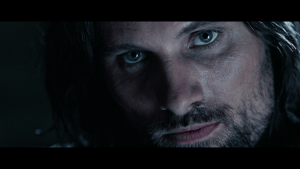
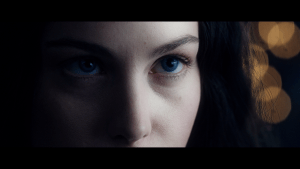
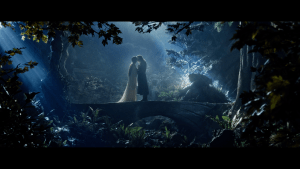
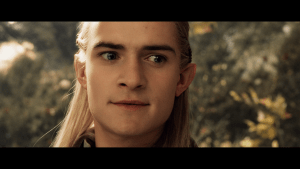
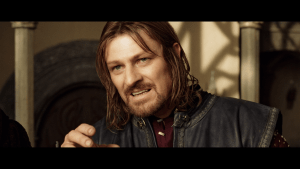

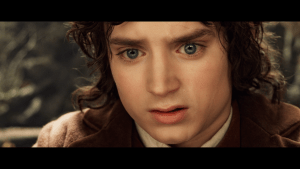
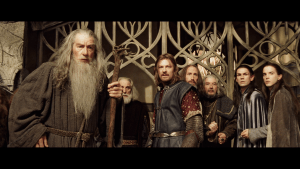
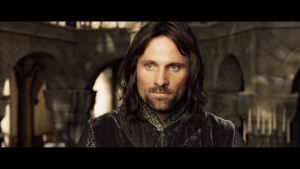
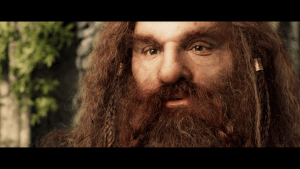
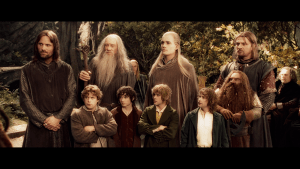



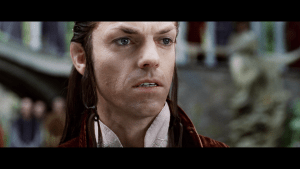
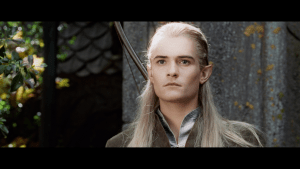


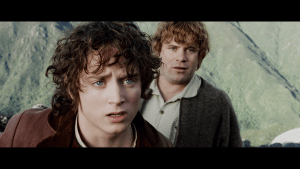
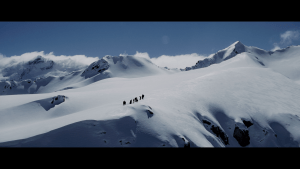
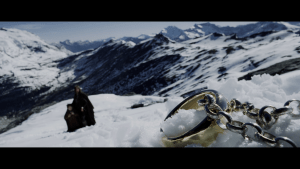


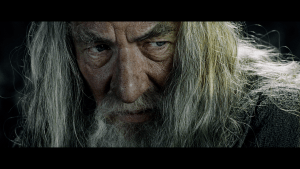
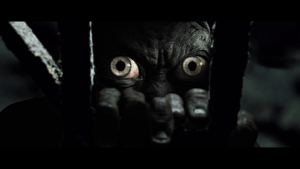
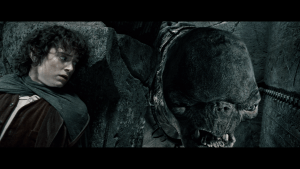

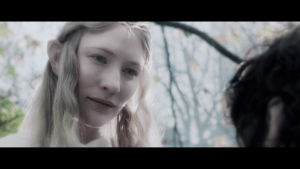
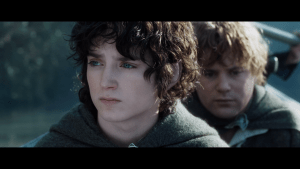
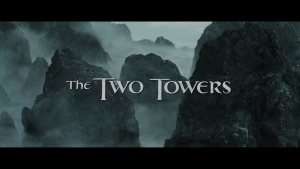
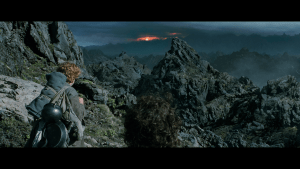
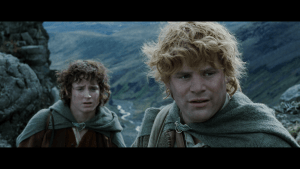
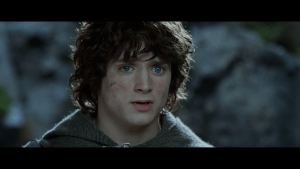

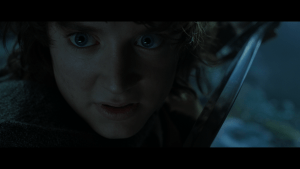
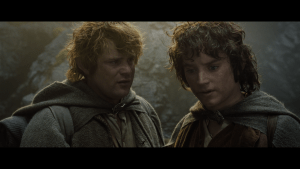
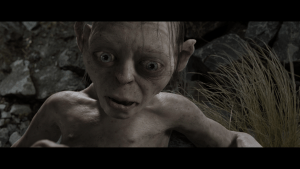
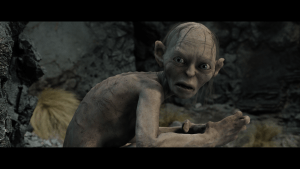
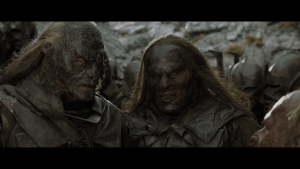
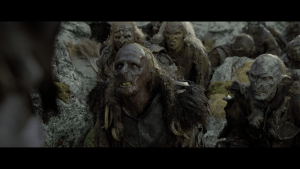
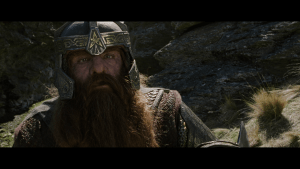
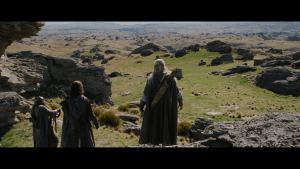

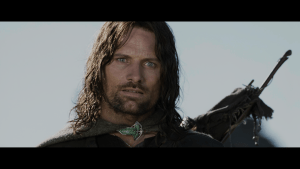
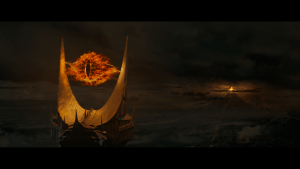
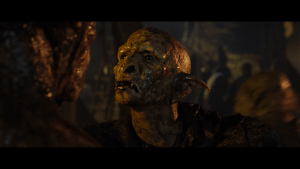
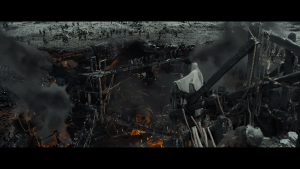
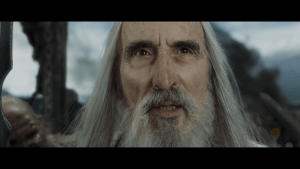

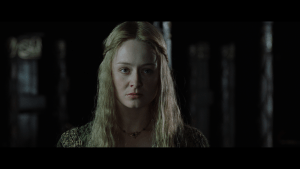
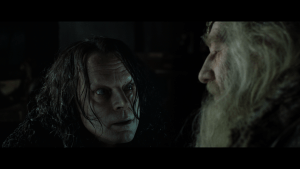
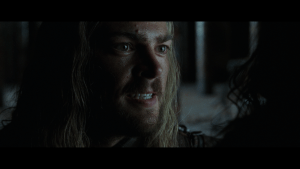
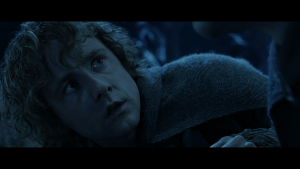

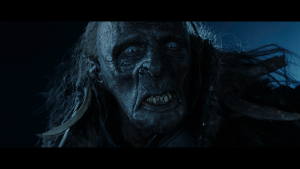
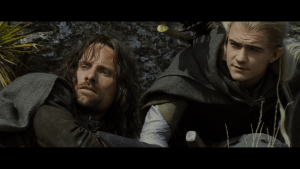
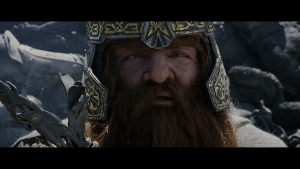
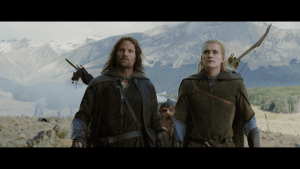
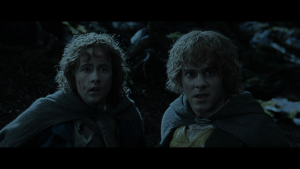
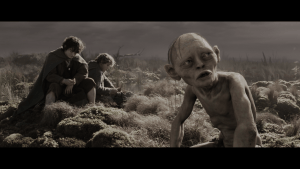
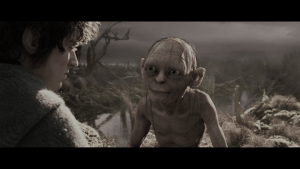
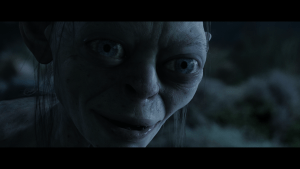
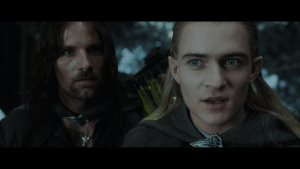

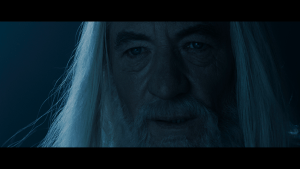
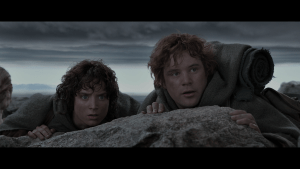
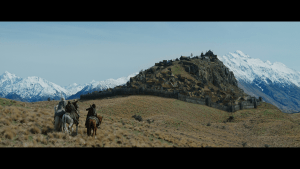
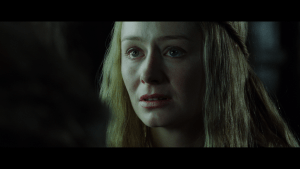
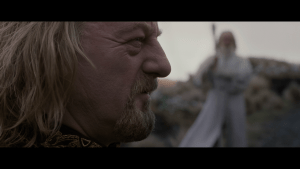
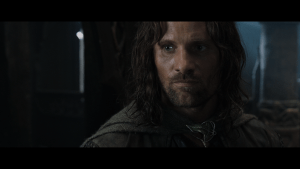


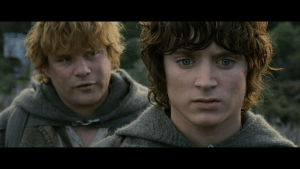

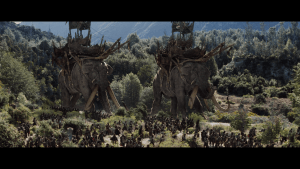

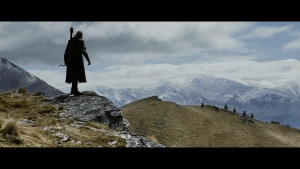
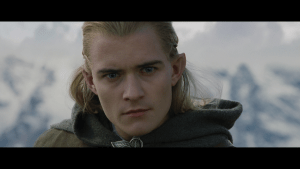
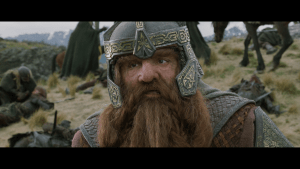

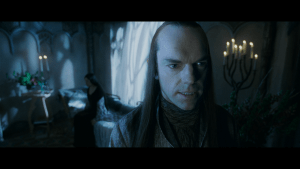
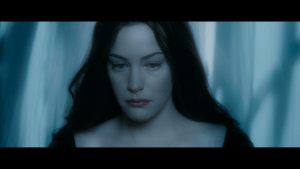

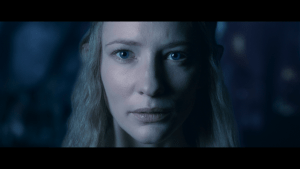
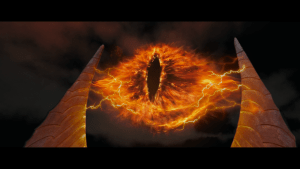
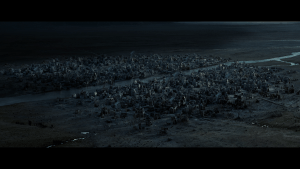
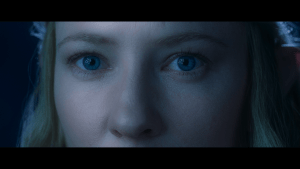
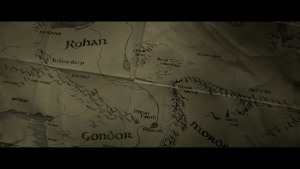
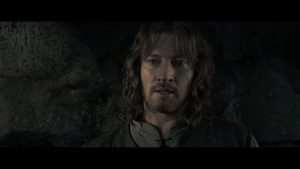
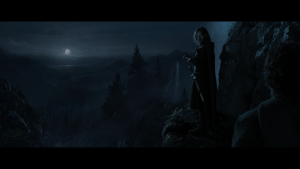
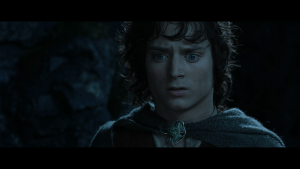
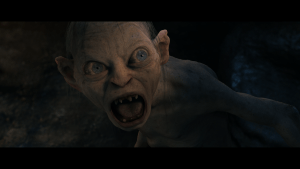

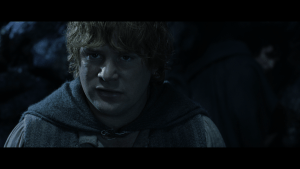
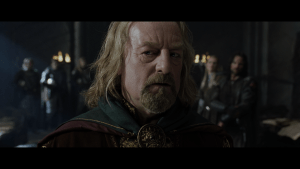
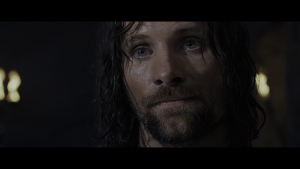
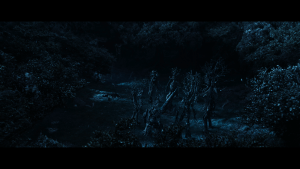
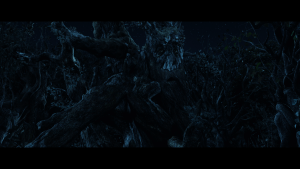
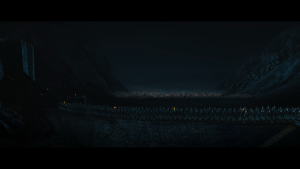

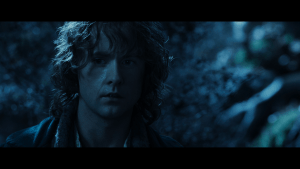
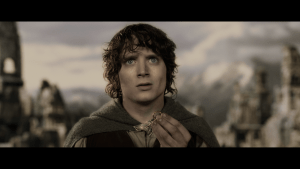

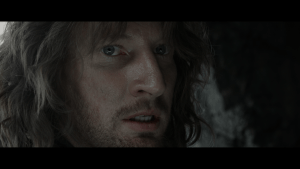
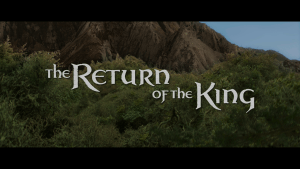
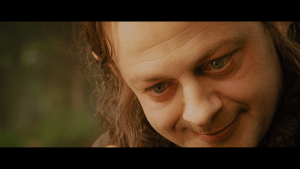


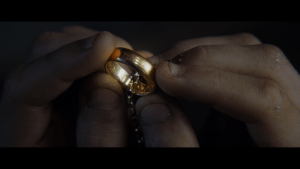

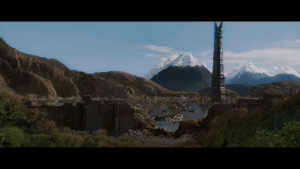

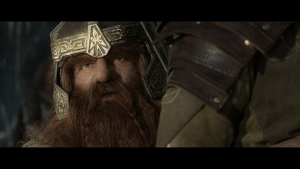
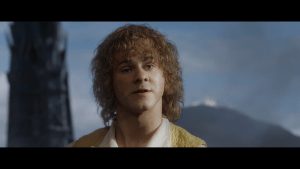
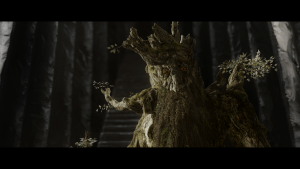


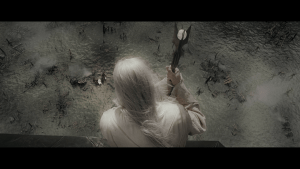


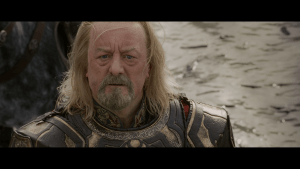
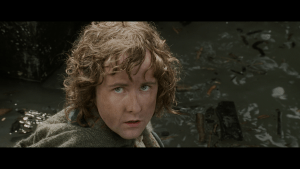

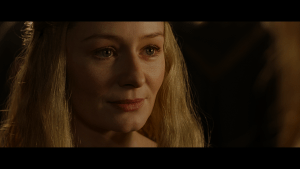

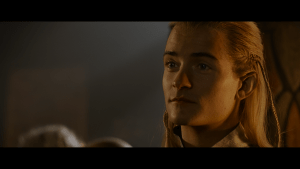
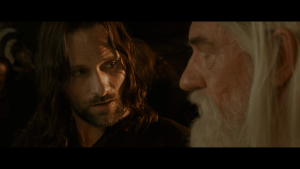
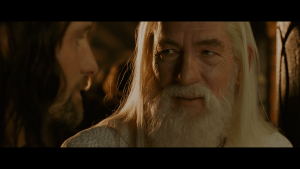
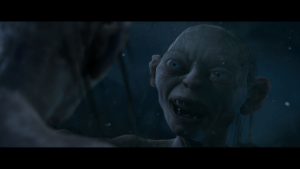
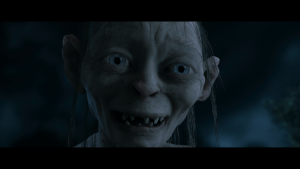

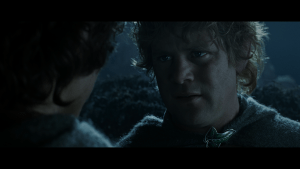
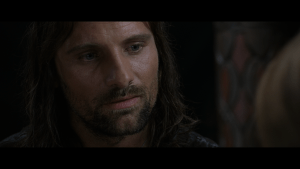

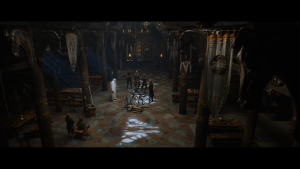
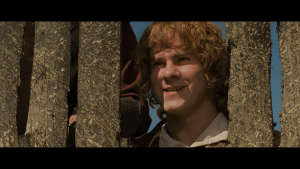

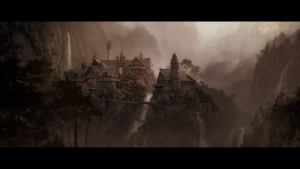
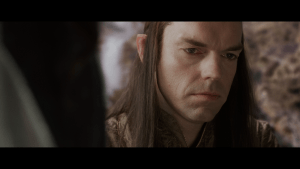



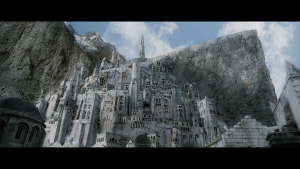


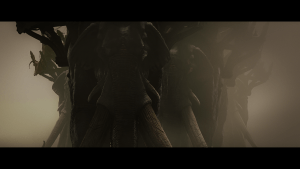

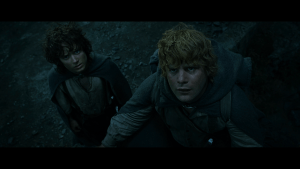
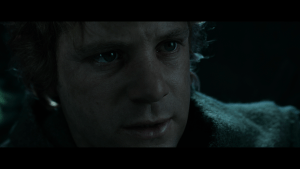


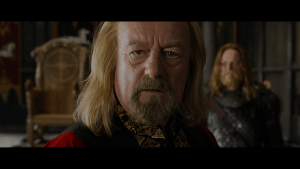
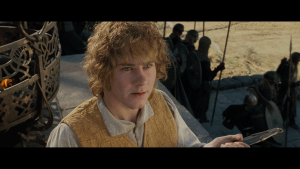
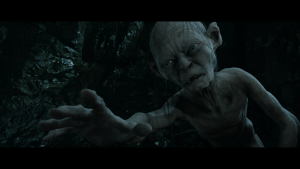
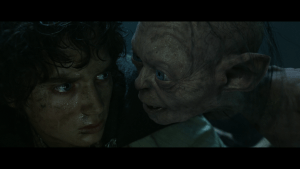
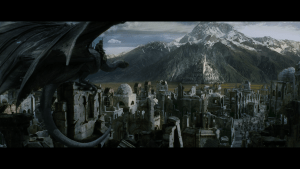
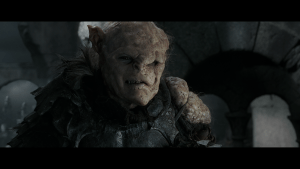
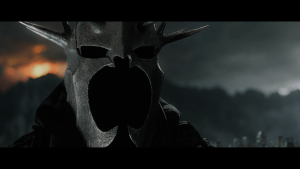
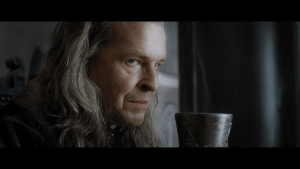


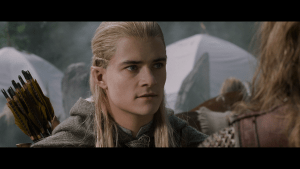
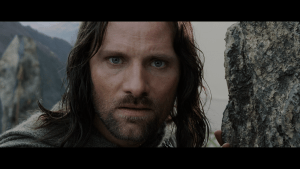
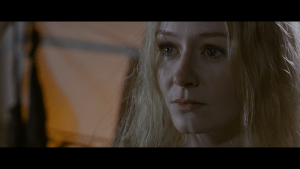
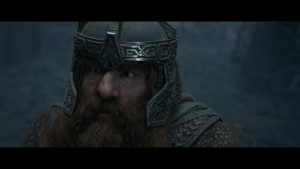
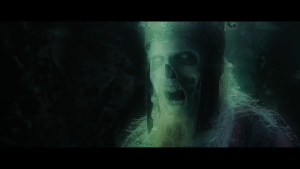
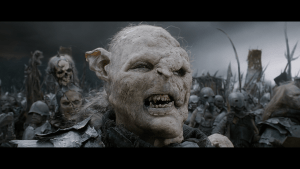
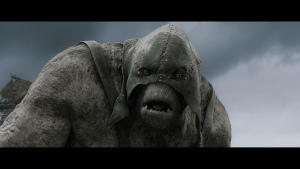
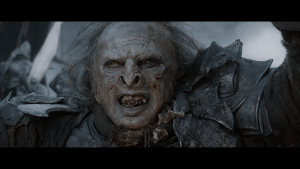

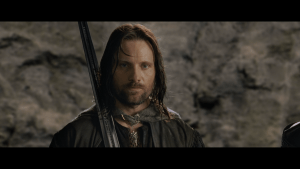
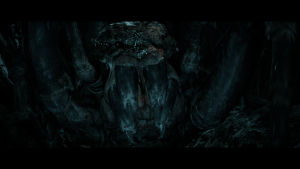
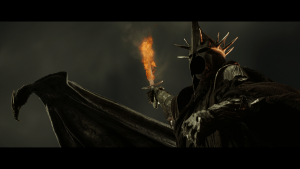

Pingback: AVexcel – Episode 125 – AVexcel